Duration: 34 minutes
Season 2
Episode 6
Training teams in a hybrid world
Are we witnessing the end of in-person training in real time? And why is the best learning content similar to the conversations we have with our friends? Gary Cookson, L&D expert, author, and consultant, joins us to answer these questions and more.
We dive into what training in the hybrid workplace means for L&D pros, the importance of building social ties into learning, and why the model calls for a more personalized learning experience than ever before. Plus: the common traps that ensnare companies and damage recruitment levels.
Key takeaways:
Learning is a versatile ecosystem. It isn’t just in-person or virtual. It’s a blend of different methods like live sessions, asynchronous content, and collaborative communities. Each piece forms a part of a larger learning puzzle that supports diverse needs.
The importance isn’t on where learning happens. But on how it’s delivered. Engaging content comes from a conversational, interactive, and dynamic flow, much like talking with friends. Short, digestible chunks of content also help keep learners’ attention.
Personalizing onboarding and training is crucial. Especially in remote environments. Connecting people based on shared interests and making learning inclusive ensures everyone feels engaged and valued.
Live training (virtual or in-person) is only a small part of the learning process. Organizations should build communities of practice, provide on-demand audio and video content, and strengthen social ties to prevent isolation and foster a sense of belonging
L&D professionals are now curators of learning. They use data to create personalized and timely solutions for learners. Their role is shifting from delivering knowledge to empowering performance and facilitating growth in real-time. Which requires a new skillset and mindset that goes beyond offering traditional classroom training.
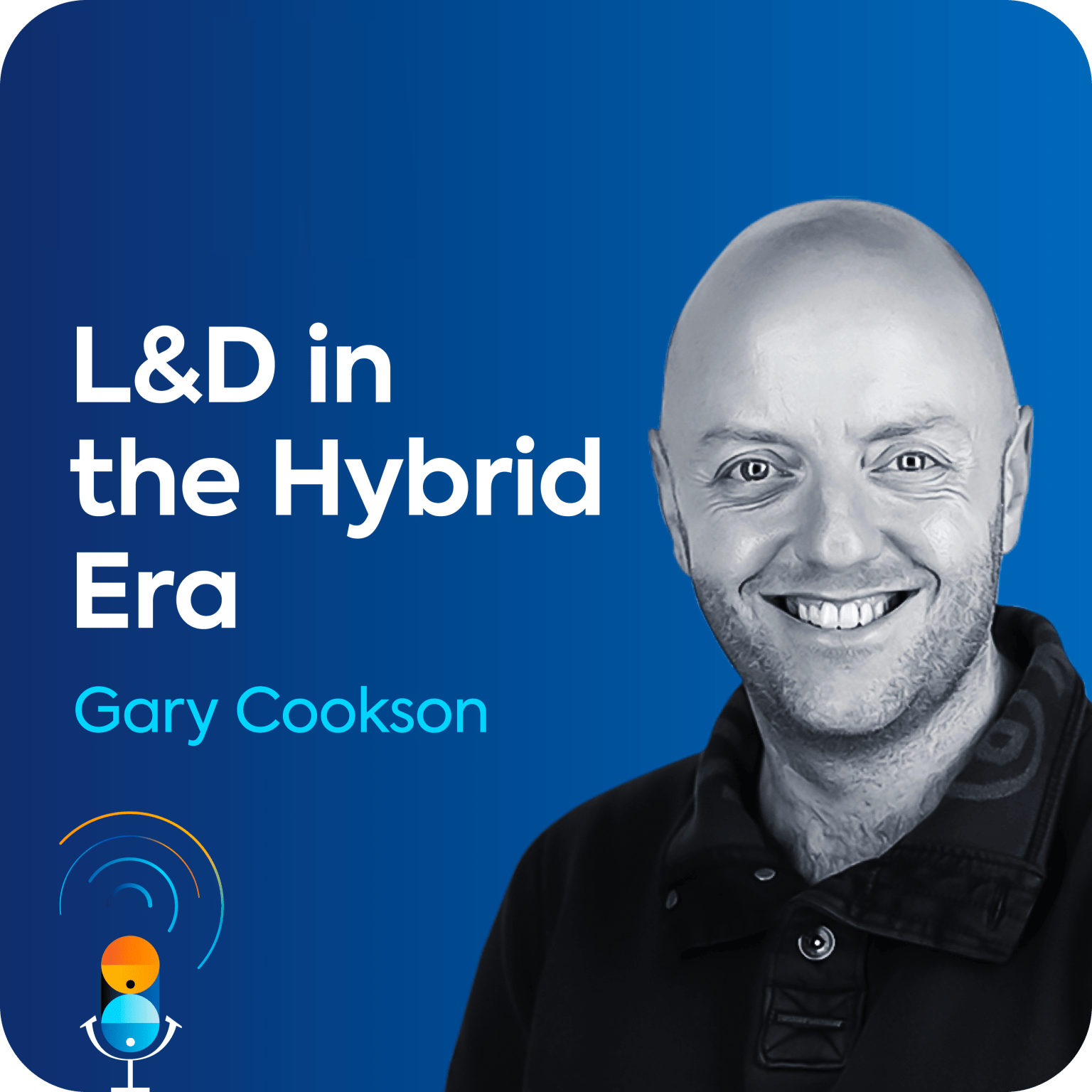
Gary Cookson
About our guest:
Gary Cookson is the Founder and Director of EPIC, a consultancy where he helps clients to improve workplace performance. Based in Cheshire, UK, he has more than 20 years of experience in strategic and operational HR, Learning and Development (L&D), and Organization Development (OD) roles in the public, private, and voluntary sectors.
He is a Chartered Fellow of the CIPD (Chartered Institute of Personnel and Development), a Fellow of the LPI (Learning and Performance Institute), and a qualified coach. He was featured on HR Magazine‘s Movers and Shakers list.
Share episode
Want more resources on this topic?

Hybrid Learning in the Workplace: Benefits, Implementation
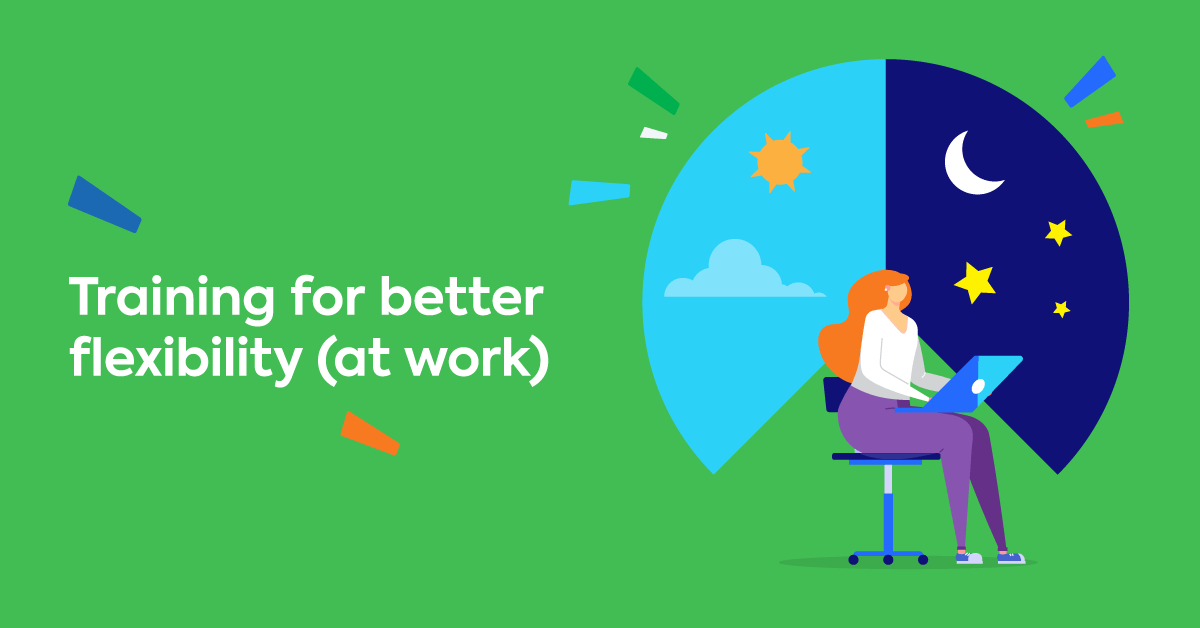
Building a flexible training program for the hybrid workplace

Beyond remote and onsite: The vital skills for a hybrid workplace
More episodes we think you’ll love
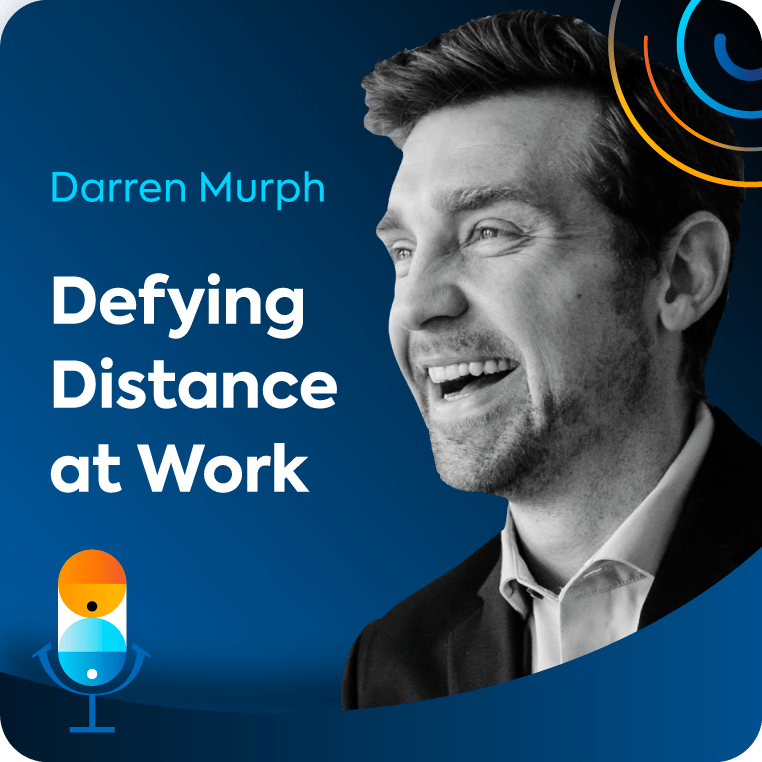
How can managers make sure their remote teams don’t just survive, but thrive? We sit down with Darren Murph who’s been preaching the benefits of borderless offices for almost two decades, earning him the moniker ‘Oracle of Remote Work’.
Together, we cover everything from the tools that improve async work to how workplace culture is teetering on the verge of a seismic shift.
Go to episode
What are the 5 key elements of relevant training? And what’s the 1 training metric that could lose L&D pros their jobs? In this episode we invite L&D consultant, Instructional Designer, and fellow podcaster, Dr. Heidi Kirby to share her experience and give us actionable advice on course creation.
Go to episode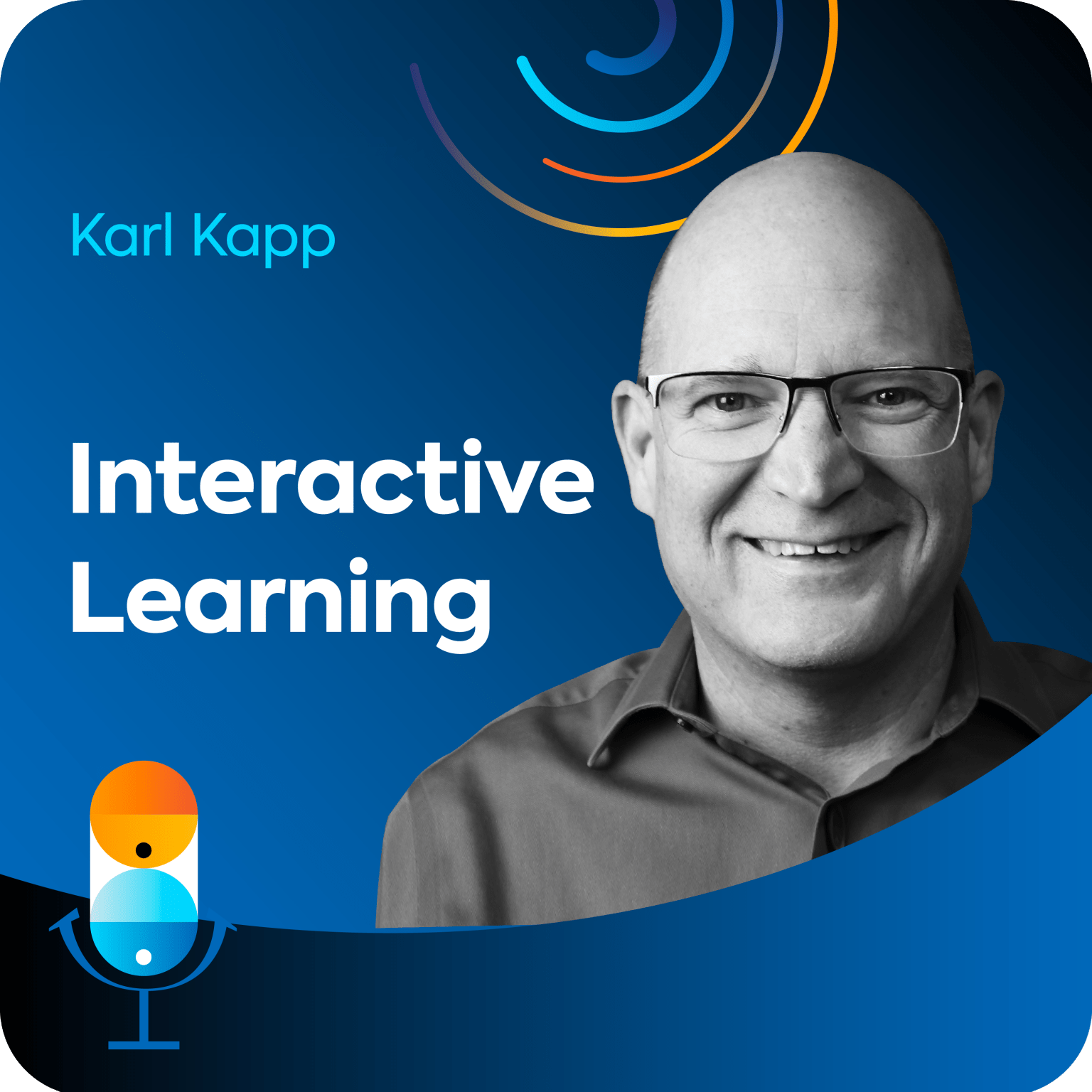
How can we make sure employees are active and engaged during training? It’s time to elevate our learning game. We talk with Karl Kapp, Gamification and Instructional Design expert, professor at Bloomsburg University, and TEDx speaker.
Karl reveals the secrets behind crafting effective, meaningful, and interactive content design for businesses big and small.
Go to episode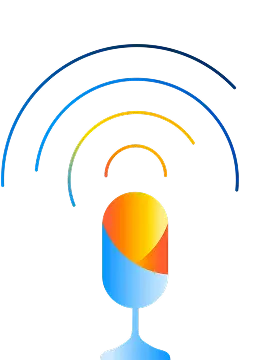
Never miss an episode! Get every new drop right in your inbox
By clicking the Subscribe button, you accept and consent to receive the type of content mentioned above. Please review the TalentLMS Privacy Policy for further information.
Full Episode Transcript
[00:00:00] Host: Welcome to Keep It Simple, a podcast where we’re challenging business and leadership experts to cut through the noise of the corporate world and get to the bottom of what makes the workplace actually work. I’m your host, Mina Vogia. Keep It Simple is brought to you by [00:00:30] TalentLMS. The training platform built for success and designed with simplicity in mind.
[00:00:36] Together, let’s uncomplicate what makes a winning workplace. You can find out more at talentlms.com.
[00:00:47] On today’s episode,
[00:00:49] Gary Cookson: We’re no longer the sage on the stage. The font of all knowledge, the single source of the truth. We’re not somebody who imparts knowledge to people [00:01:00] in a training session we’re somebody who facilitates learning and more importantly, facilitates performance on the job as well.
[00:01:08] Host: Is it the end for in-person learning?
[00:01:10] And what is it about virtual training that requires an entirely different skillset for L&D professionals? Our guest today is a man who’s no stranger to delivering online courses. He’s the CEO of Epic HR, a UK consultancy firm, and author of HR for Hybrid Working, a guidebook [00:01:30] to help businesses seamlessly shift into the hybrid world.
[00:01:33] We’ll be discussing how to keep teams connected with learning communities and what it takes to become a catalyst for a change in the culture. Stay with us.
[00:01:51] Hi, Gary. How are you?
[00:01:53] Gary Cookson: Hello, Mina. I’m really good. Thank you. Nice to meet you. How are you?
[00:01:56] Host: Nice to meet you too. I am doing great. [00:02:00] So could you tell us in your opinion, are we seeing the end of in-person learning at work?
[00:02:06] Gary Cookson: No, I don’t think we are. I think we’re seeing a shift, but it’s not a complete shift through to virtual learning.
[00:02:16] I think we all know why virtual learning took off four or five years ago, but we were already moving down that line anyway, in the 2010s, slowly it took a global pandemic to shift everybody there almost [00:02:30] overnight. But Virtual learning has its merits. It has its limitations as well. And some of the big limitations are that there are.
[00:02:39] Limited opportunities for socialization, the in-person learning provides, they can build them into virtual learning, but you need a very skilled facilitator. You need a really good platform to be able to do it. And sadly, both of those things are lacking in many organizations in my research. So in person learning’s still got a place.
[00:02:59] We just don’t [00:03:00] have to do virtual learning anymore. There was a time when we did, now we’ve got choice and organizations are choosing to make different decisions and go in different directions. And it’s fascinating to unpick why and how they’re doing that. And to me, the key is the blend. What you’re building there is what I’d call an ecosystem with different aspects to it, and I think each of those has its place.
[00:03:24] Imagine a jigsaw puzzle with all the different pieces that a virtual learning session is a [00:03:30] piece of that jigsaw. So is an in-person learning session. And so is a lot of offline asynchronous content as well. So, to me, I don’t think it’s helpful to think about learning as either in person or virtual because there’s much more to it than that.
[00:03:46] There’s way more nuances. We’re not just talking about two forms of learning. We’re talking about dozens of which they are too.
[00:03:54] Host: Now, studies show that people often have less attention span when learning from home compared to [00:04:00] live in-person sessions. So how can L&D professionals make sure their virtual courses are as engaging as possible to make up for this?
[00:04:09] Gary Cookson: Well, I’d be interested in accessing some of those studies and to understand how attention span is actually being gauged. Because when you’re face to face with somebody, Mina, imagine you’re having a conversation with one of your, one of your close friends. I’m fairly certain there’s been a situation in the past where you’ve been right in front of them, [00:04:30] talking to them, but you can tell that their mind is elsewhere.
[00:04:34] That happens to us all, all the time, face to face. And that’s not because of the medium. That’s because of the delivery. That’s because of the content. Now, I’m not suggesting you’re boring or that you bore your friends, but I’m sure you get the point. The problem there is not to do with the way things are being accessed ie, through a screen or face-to-face.
[00:04:56] The problem is in how it’s being delivered. So lack of engagement. [00:05:00] The problem is in potentially boring content. So you ask about how we can make learning more engaging. It’s about how you, how do you have the best conversations with your friends? It comes effortlessly, doesn’t it? It’s an ebb and flow of conversation.
[00:05:16] Lots of opportunities to talk and ask questions, and the best conversations you have with your friends, that’s what they’re like. Well, that has to be how we build learning sessions. It has to be conversational. It [00:05:30] has to be in the flow. It has to be two-way or multi-way, and it has to be delivered in short chunks.
[00:05:37] So going back to your original points about attention spans. What we may be seeing there is not people’s attention spans being shorter whilst virtual, but a temptation to do other things when virtual. We’re not really measuring attention span. What we’re seeing is the impact of multiple diversionary [00:06:00] activities, whereas in a face-to-face learning environment, there are fewer of those. So I don’t necessarily agree that attention spans are lower in a virtual environment. I think it’s something else, and we’re interpreting that way.
[00:06:14] Host: So I understand that basically, the priority has to be being interactive, keeping the courses interactive.
[00:06:23] And so collaboration is really important and communication is also really important. What kind [00:06:30] of tech do you think helps to strengthen collaboration and develop a community of learners?
[00:06:36] Gary Cookson: Tech is really important thing to get right. If the learning is going to be face to face, then we have to remember that jigsaw puzzle analogy that I mentioned before that the live session they’re in, the face to face session is not the entirety of their learning experience.
[00:06:52] There will be things that they need to do before that live session. And there’ll be things they are expected to do afterwards. And some of those will be done using [00:07:00] technology, even if the middle bit, the training session is face to face. So they need content that’s easily accessible to them at the point they need it.
[00:07:10] And that probably means that it’s going to be mobile-enabled and something that is easily able to be accessed from your mobile phone. And that mirrors how we learn in our personal life outside of business. If you think about the last thing that you taught yourself by watching a YouTube video, you can probably come up with [00:07:30] half a dozen 10 or more things that you’ve taught yourself.
[00:07:33] I taught myself how to change the inner tube on my bike, how to change the valves on my radiator. I’ve taught myself to cook various things just by watching a YouTube video. But did I wait for a training session on that? No. Did I even look for a training session on that? No. Did I call on the services of an expert to coach me through it?
[00:07:53] No. I went to a very short five-minute maximum video content [00:08:00] that I could pause. Rewind, replay, and use when I needed it. And we’ve got to make sure that we’ve got tech that delivers learning content to people that way. Moving to more specifically live virtual sessions. You asked about the tech there.
[00:08:17] There’s a software element you need to get right with live virtual sessions. Lots of people will be familiar with Microsoft Teams or Zoom and they’re ubiquitous programs. They are [00:08:30] good at video communication. Video communication is one way in which you can learn and interact in a virtual classroom setting.
[00:08:37] It’s not the only way. So they’re good at doing that. They’re good at generally good all-around programs, but they’re not dedicated learning platforms. They weren’t built for virtual classrooms. We’ve talked about face-to-face training. We’ve talked about virtual training.
[00:08:55] You’ve got a middle ground of what I call a hybrid training [00:09:00] session. And that’s a training session where there are people in the room, physically in the room, but there are also people dialing in on a video call. And you’ve got two sets of learners with two different experiences. I could talk a lot about that particular topic.
[00:09:15] The summary of that is don’t do it because it’s a horrible thing to do, unless you get the tech right. Now the tech needs to be world-class audio-visual capability in a hybrid [00:09:30] training room. It’s expensive. And there aren’t many software platforms that will cope well with it. And unless you’re going to be doing hybrid training sessions all day, every day, that’s not worth the investment.
[00:09:42] And that’s why I always say, don’t bother.
[00:09:45] Host: I really like how you break it down and you really do make it digestible for each specific circumstance. I really do want to ask you though, there was a Deloitte survey that talked about onboarding [00:10:00] and how it was the biggest worry of going remotely, and it’s easy to see why starting a new job remotely could cause real isolation, particularly for junior employees who benefit from a kind of osmosis and at work shadowing.
[00:10:13] What are some ways that we can update the remote onboarding experience so that it remains as impactful as traditional in-person onboarding?
[00:10:24] Gary Cookson: Yeah, there are lots. And it’s a really important aspect to get right as well. And [00:10:30] particularly where somebody may have left on a, on a Friday afternoon, they’ve left one virtual job and on Monday morning, they’ve started with you in their next virtual job.
[00:10:41] And from their perspective, they’re sat in the same seat, they’re using the same laptop, they’ve got the same things around them on the walls, it’s the same job for them. Now, of course, it isn’t, but it feels like it. So the emotional attachment they have to their old [00:11:00] employer is still there, has been brought with them into that.
[00:11:03] So we’ve got a real driver to break that emotional connection they have to sever it with their old employer and rebuild it with us. So how do we do that? Well, some of the best ways to do that are through socialization. Think about the best jobs you’ve ever had, Mina. Think about those. I suspect that in all of those, there was a common theme [00:11:30] that you made close friends in those jobs and probably still have those friends, even though you may not work with them anymore, but there were people who you felt close to.
[00:11:39] And that’s what makes a difference to people when they join companies, finding people who they think will become close friends. Now that can be done virtually, and there are lots of ways to achieve it virtually. It should be done face-to-face as well, and I recommend a blend of both of those things. Some of the [00:12:00] clients I’ve been working with, when they have a new starter in their team, even though the team may be mostly remote, and the new starter also mostly remote, during those early weeks, they vary their hybrid working pattern.
[00:12:17] And there’s an expectation that when there’s a new starter for a period of time, everybody is in the office more for a period of time to, to have that, that osmosis effect that you mentioned [00:12:30] before, so that people can observe and learn by observation, learn by overhearing things, but what do you need to do with anybody who started remote?
[00:12:39] There are a couple of key things. Okay. to get right. Firstly, before they, they start, you’ve got to build the anticipation of this. And I think there’s no such thing as over-communicating. We’ve got to saturate the new employee with information about the company, the team, their [00:13:00] manager, their colleagues, everything.
[00:13:02] That doesn’t necessarily mean giving them things to do. You could give them things to do, but just give them things to read things, to watch video messages from that team would work really well and encourage them to reply to them, uh, connecting with them on social media, inviting them into any internal social media channels so they can see the, the informal chat would be useful connecting them with people who they’ve got things in [00:13:30] common with. So when I’ve joined an organization, I want to know who else supports Manchester United. I want to know who else likes to run first thing in the morning. I want to know who else likes to go on holiday to certain places and whose favorite TV program is the same as mine.
[00:13:47] I want to know that stuff. So that I can start talking to people like me about things that we have in common, that can lead to a buddying up type of system as well, where [00:14:00] during the early weeks, we’ve got somebody who is friendly enough with the new starter to virtually guide them through the induction period as well, making sure they, the new starter understands the expectations about remote working as well, because it might be different than where they’ve worked in the past. It’s easy to feel isolated working remotely. So overcome that by creating social ties for people.
[00:14:26] Host: And it’s really interesting, no matter what [00:14:30] position you’re going in for, no matter how senior or how junior, when you’re entering a new environment, There’s always that sense of vulnerability.
[00:14:41] And it’s amazing how the buddy system that you mentioned, I really think it actually feeds into that. It gives you that sense of safety, but also the sense that you are being valued. We value you enough to assign a person to walk you through, you know, the first challenging few weeks.[00:15:00]
[00:15:03] We’ll get back to our chat with Gary in just a second. But first, we wanted to give you our perspective on how an LMS system can be a surefire way to make everything we’ve been talking about with Gary today a bit easier. An LMS like TalentLMS provides the perfect support for asynchronous learning, helping distributed teams get up to speed at their own pace wherever they are.
[00:15:26] Although your people may be physically out of reach, it [00:15:30] doesn’t mean their individual learning needs have to be. With TalentLMS you can create a personalized learning experience to support individual upskilling needs. An LMS is also a great way to centralize all learner progress in one place so that managers can manage, deliver, and track training without any extra work.
[00:15:50] Plus, it can act as a space for learners to connect and share knowledge with one another and get direct help from instructors in real-time in the form of forums and discussion [00:16:00] boards. Given the way that most companies adopted a hybrid remote model was very rushed due to the circumstances, there are a lot of organizations that had a very steep learning curve. In your book, however, you have some interesting case studies of companies that have delivered a successful hybrid strategy. Do you have a favorite case study, one that you perhaps find the most interesting?
[00:16:27] Gary Cookson: I do, but I think it’s really [00:16:30] unfair for all of the others for me to say that this one would be my favorite. There are many in the book that I’ve already published, and the one that’s coming up in a few months time. There are many, I’ve probably got 40 different organizations of varying shapes and sizes and different locations as well.
[00:16:49] And they’re all doing something different there. And that to me is what is the key to making hybrid working work. Don’t follow what other [00:17:00] organizations are doing. Your company’s got to build its own hybrid working strategy. That’s reflective of its own context and what’s going on for it, where it’s affected by it in the external environment, the internal perspectives too.
[00:17:13] So the point has to be, plow your own furrow, be something that is unique. Don’t try and copy organizations learn from what’s worked and what hasn’t in them, but do something bespoke to your own organization.
[00:17:29] Host: [00:17:30] You brought up something that I feel like we forget on a daily basis. We look at all these major corporations, they’re innovative, and they’re keeping up with the times, but we forget that corporations and organizations really are snowflakes of sorts.
[00:17:46] You’re never going to find the exact same one. But if I can try to get a reaction from you, was there at least one that was close to your heart for some reason. [00:18:00]
[00:18:01] Gary Cookson: Oh yeah. And, and this, funnily enough, is not featured in the book, but if you, if you follow me on social media, you’ll see I comment regularly on it, and that’s Manchester United, right?
[00:18:12] I support Manchester United and I’m a big, big fan. Always have been. It’s been a tricky last 12 years or so Mina, and we’ll not get into the reasons why, and we particularly won’t talk about recent results. But as a business, they’re making some interesting hybrid working decisions. And, [00:18:30] and I’m torn by it because I want them to do well, but I think they’re making the wrong decisions and outlining them in the wrong way.
[00:18:38] And they’re creating mandates about on-site attendance and no more remote working. And I think that’s really, really, um, kind of dated as a, as a management approach, but could also really backfire on them as well. Now they’re not alone on that, but I got I get [00:19:00] really emotional about it because I’m a fan of hybrid working, but I’m a fan of Manchester United, and I can’t quite reconcile the two different directions are going in. Another one
[00:19:09] I got really emotional about was Boots in the UK , Boots is a, uh, leading high street retailer in the UK and they’ve obviously got a head office as well as all their, their shops on the high street and the chief executive of Boots said about eight, eight months ago, he said, right, [00:19:30] no more remote working.
[00:19:31] That’s it for the head office staff. No more remote working. And you’ve all got to come back into the office full-time. No exceptions. If you don’t like it, leave. So that’s pretty much what Manchester United also said. But he said a couple of interesting things in explaining it. He said the reason why I want everybody to be in the office is that, and I quote him here, in my experience, the office has always been a good place for me.[00:20:00]
[00:20:00] Now, in my experience and for me were the things that, that immediately drew me like a beacon to him. And so you then start to examine what has, what has his experience been and who is he, that he’s had such a positive on site experience. And you then look into a bit of his background and, you know, he, he was a white male, middle aged upper class.
[00:20:25] Son of a baron, went to private school, grown-up children, never had to do [00:20:30] a school run. I always had people to do it for him. Never had to pay to commute into an office, you know, all kinds of things that marked him out as different from the majority demographic in his organization. The same is true of Sir Jim Ratcliffe at Manchester United and the leaders there in both those organizations are making decisions based on the lens through which.
[00:20:54] They have experienced and seen the world of work. And I hold my hands up to my face [00:21:00] deliberately here because it’s a blinkered view, and it’s not an evidence-based practice approach either. They’re making a gut-feel, opinion-based decision based on their personal experience and not that of anybody else.
[00:21:17] The office of national statistics in the UK is a government organization, and they made a similar mandate about a year ago. And since then they’ve had a lot of, [00:21:30] uh, industrial action as a result of this, but since then you’re able to track, cause you can access this data, uh, their recruitment levels and their retention levels since they mandated
[00:21:42] full onsite attendance for everybody. Now, retention hasn’t really gone up or down. It’s, it’s stayed the same, but their recruitment figures have plummeted. They went from getting lots of applications for jobs to getting hardly any [00:22:00] for jobs. So again, that suggests that for the people who are already there, you can pretty much treat them how you like, but don’t expect people to want to come and work for you if the culture is one of mandating onsite attendance.
[00:22:14] Host: You know, you see the differences between generations and especially those entering the workforce now, and it’s like there’s a bit of a reaction to anything sort of mandated, but I do want to take us back to you, you made a really [00:22:30] interesting point about the CEO of Boots. And, you know, having that very narrow experience.
[00:22:37] And so that was his experience, his opinion, and that leads me perfectly into my next question. Do you think that the introduction of hybrid has emphasized a need to rethink inclusivity and accessibility when it comes to training?
[00:22:53] Gary Cookson: Yes, it has. And not just training, but the entire employee experience, remote and hybrid [00:23:00] working offers us far greater opportunities to personalize the employee experience and to think really carefully about what each individual needs in order to deliver their best, and you could talk about people with, with certain health conditions who are able to access work more easily because work can come to them through their screen in their house, how they’ve got it set up. It’s perfect for them. They don’t have to struggle with a commute. You could talk about those with caring responsibilities, [00:23:30] more easily able to juggle all the different demands on their time because they’re closer geographically to where those demands need them to be.
[00:23:38] You could talk about. All the, you know, different age groups or ethnic minorities. You could talk a lot about inclusivity. So, the worker experience, the employee experience now needs to be hyper personalized, individualized to each individual, because that’s what we are. You can’t treat everybody the [00:24:00] same and expect everybody to behave and perform the same, but the same is true about learning and training. We’re all different. We all like to access learning in different ways. We all take different speeds of time to process it and to use it. We would all like to interact in different ways. And just using a virtual training session as an example, I might be facilitating a session here, and there are a couple of people in the room.
[00:24:29] [00:24:30] You’re one of them. I ask a question, and I’m expecting everybody to answer. Some of you will raise your hand and unmute yourself and answer that way. Some people will go into chat and answer it that way as well. And that’s about choice. That’s about not forcing people to interact in a way that I want them to.
[00:24:51] It’s about giving them a choice to interact in a way that’s more comfortable for them. And therefore leveling the playing field in a [00:25:00] face to face environment, in a training session, you can’t do that. And that’s why we’ll not see organizations going completely away from one or the other because having both enables them to get the best of both worlds.
[00:25:12] Now, I would suggest, therefore, that we need to start moving away from a live training session. Doesn’t matter whether it’s face to face or virtual, but a live session. We have to move away from that being seen as the main place where people will learn. It’s not the [00:25:30] case anymore. It is a tiny piece of that jigsaw puzzle, and they’ll get other things through a community of practice they’ll get other things through audio content, video content that they can access on the go in real-time.
[00:25:44] They should be encouraged to generate their own content they can share with other people as well, like an organizational wiki or something like that they need to be able to connect with people and apply their learning, [00:26:00] and be given the responsibility, but also the accountability to do that. And that changes who we are as people, professionals as well, we’re, we’re no longer the sage on the stage, the font of all knowledge, the single source of the truth.
[00:26:17] We’re, we’re not somebody who imparts knowledge. to people in a training session we’re somebody who facilitates learning and, more importantly, facilitates performance on the job as well. [00:26:30]
[00:26:30] Host: Again, I’m really happy you brought that up because one of the things I really looked forward to speaking to you about is how you’ve spoken about the role of L&D professionals and how they need to think of themselves as real-time performance consultants. So having the ability to pick up on pain points, performance issues or struggles. So what are some ways in a hybrid and remote working environment that they can be aware of these pain points and then be proactive about [00:27:00] offering solutions?
[00:27:01] Gary Cookson: There’s a, there’s a number of ways.
[00:27:03] I mean, if you take the traditional employee life cycle of entry through to exit of an organization, there are various touch points, which almost all employees interact with the organization. And induction is a good example. Mandatory training will be another, and there are lots of others. And we can anticipate some of those pain points and we can put learning content.[00:27:30]
[00:27:30] around some of those pain points to try and anticipate some of that. So some of that we can, we can plan for, we could also do what I call social listening much more, and that’s, you know, you might call that Facebook stalking or something like that, but what I’m getting at is scan the internal social media channels in your organization to see what people are talking about.
[00:27:57] To see what questions people are asking, to [00:28:00] see what people are complaining about, to see what people are confused about, and there are ready-made pain points that you can then tackle. Now, the way you tackle it is not set up a training session to deal with that. The way you tackle it might be to utilize the power of the crowd and get them to generate their own content.
[00:28:20] Or it might be that you create some content that can help them. put the next person to experience that pain point. There are a number of different ways to do it, but that’s changing the skillset of who [00:28:30] we are. It’s changing the mindset of who we are. We need to be curators of learning content in lots of different media.
[00:28:40] We need to be creators of learning content in lots of different media. We also need to look at the available data about remote and hybrid workers and look at what that tells us about people’s ability to learn. And I’m not just talking about learning experience platforms. Look at the data there. That’s a really valuable [00:29:00] source, by the way, but it shouldn’t be the only one.
[00:29:01] Data is about noticing what people say and how they say it. Data is noticing what people should say, but they don’t. Noticing the contributions they make and the ones they don’t, noticing the interactions they have with people and how smooth those things are, noticing the clarity of communication because any element of remote working people have got to have much [00:29:30] better
[00:29:31] reading, but particularly writing skills than you would ever have face to face. There are some tech skills that people need to do. There are some team-based skills that people need to work on as well. When a hybrid team is set up, they need guidance about how to work together. They might work it out eventually for themselves, but they’re, they’re stuck in a phase of problem solving and [00:30:00] not knowing how they need to work together. And as an L&D professional, we can, we can help with that pain point. We can anticipate that we can work with teams, work with leaders, work with the data, and only a tiny fraction of what we do therefore is stood in front of a room of people talking.
[00:30:17] Host: Now, as we’re sort of nearing the end of our time together, I do want to ask you a couple more things. It seems as though tech and circumstances have brought about a shift in our world before the [00:30:30] culture has had a chance to catch up. What can we do as leaders, L&D and HR professionals to ensure that that culture changes?
[00:30:41] Gary Cookson: You know, if you’ve got a patch of grass in your back garden and, you know, it might be perfect when you look out your window, but if you don’t care for it, you know, within weeks, within months, that grass [00:31:00] is going to be full of weeds. It’s going to be overgrown. It’s going to start to deteriorate.
[00:31:04] If there’s a lot of hot weather, you might need to water it. If there’s a lot of cold weather, you might need to protect it. And organizational culture is like that patch of grass that you see outside your window. If you leave it alone, it will deteriorate. But if you care for it, if you consciously make efforts to bring people together, to focus on the organizational values and what matters to it, if you challenge people who don’t behave in the [00:31:30] right way, if you build communication structures across the organization and think about the whole organizational system and how it fits together.
[00:31:40] You, you can build a really good culture and you can do that just as effectively remotely as you can face to face. And what tends to be the case is lots of organizations who have experienced remote and hybrid work and say that it has damaged their culture, but those are the organizations who have [00:32:00] let it damage their culture. Those are the organizations who have not addressed the things that hybrid working exposes for them. And again, I’ll use the window in your house as an analogy here. When you have the blinds or the curtains closed, that’s face-to-face working. You can’t see what’s going on to that patch of grass outside your window because you’ve got the [00:32:30] shutters closed.
[00:32:31] Hybrid working is opening the shutters for you, enables you to see where you need to address areas of concern in your culture. If there are things you see through the window that you don’t like, then the solution is not to close the shutters. The solution is to go out into the garden and sort it out.
[00:32:56] Host: I love the window [00:33:00] comparison. Now, we have a little tradition on Keep It Simple where our final question is always a bit of a doozy. So in one sentence, how can we keep it simple when it comes to training our teams remotely? The one-sentence bit is what really throws people off.
[00:33:21] Gary Cookson: Yeah, because I could answer that in a whole book.
[00:33:24] Host: Yeah.
[00:33:24] Gary Cookson: Let alone one sentence
[00:33:26] Host: as you’ve done.
[00:33:27] Gary Cookson: Yes. As I’ve done [00:33:30] twice. And people can buy both books from all major booksellers, by the way. But in one sentence, how can we keep it simple? Listen to people and what they want.
[00:33:42] Host: Listen to people and what they want. Amazing. Gary, thank you so much. It was so lovely talking to you.
[00:33:49] Gary Cookson: Thank you, Mina. Really enjoyed it.
[00:33:57] Host: Thanks for tuning in. You can find Keep It [00:34:00] Simple on all podcast platforms. Be sure to subscribe so you don’t miss an episode. This episode of Keep It Simple was brought to you by TalentLMS, the training platform built for success and designed with simplicity in mind. For more resources on today’s topic, visit [00:34:30] talentlms.com/podcast.
Train your people. Measure results. Drive growth.
TalentLMS gives you the tools to supercharge every step of your training.

